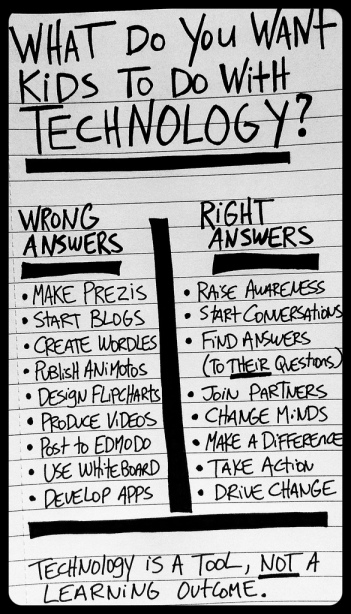It has been a very exciting week as the local Appleton community has chosen to pass both referendum questions on the ballot this past Tuesday. More specifically, I’m excited about what this means for our schools in regard to technology. Students will have more access to the web, research and have the ability to create and share their work. All students in the high schools will be issued a device that they will then use in their classes.
I think the biggest misconception is that going 1:1 is simply about the technology. It’s not. Technology is simply a tool.
The biggest challenge that we will need to overcome is simply “using the technology” to do the same things we have always done. Rather we need to figure out ways to challenge our students to do more. The goal is rather to have students be able to create, innovate, share and collaborate. We want them to safely and appropriately connect to the world outside of our walls and allow them to have support as they figure out how to do this.
This starts with teachers and administration. We need to start wrestling with what this all means for our lesson plans and units. We need to envision how this will change how our classroom will look. How will this allow us to better teach our curriculum? Remember technology is another tool in our toolbox. How will we incorporate that? We’ve all had those days when we would love to have access to a computer lab for an activity, only to see it booked for weeks to come. The lab has now entered our room.
I really recommend attending the summer Tech Institute and other staff development sessions this semester. It’s an exciting time and I will do all I can do to come alongside of you as we all prepare to teach in a 1:1 environment.

